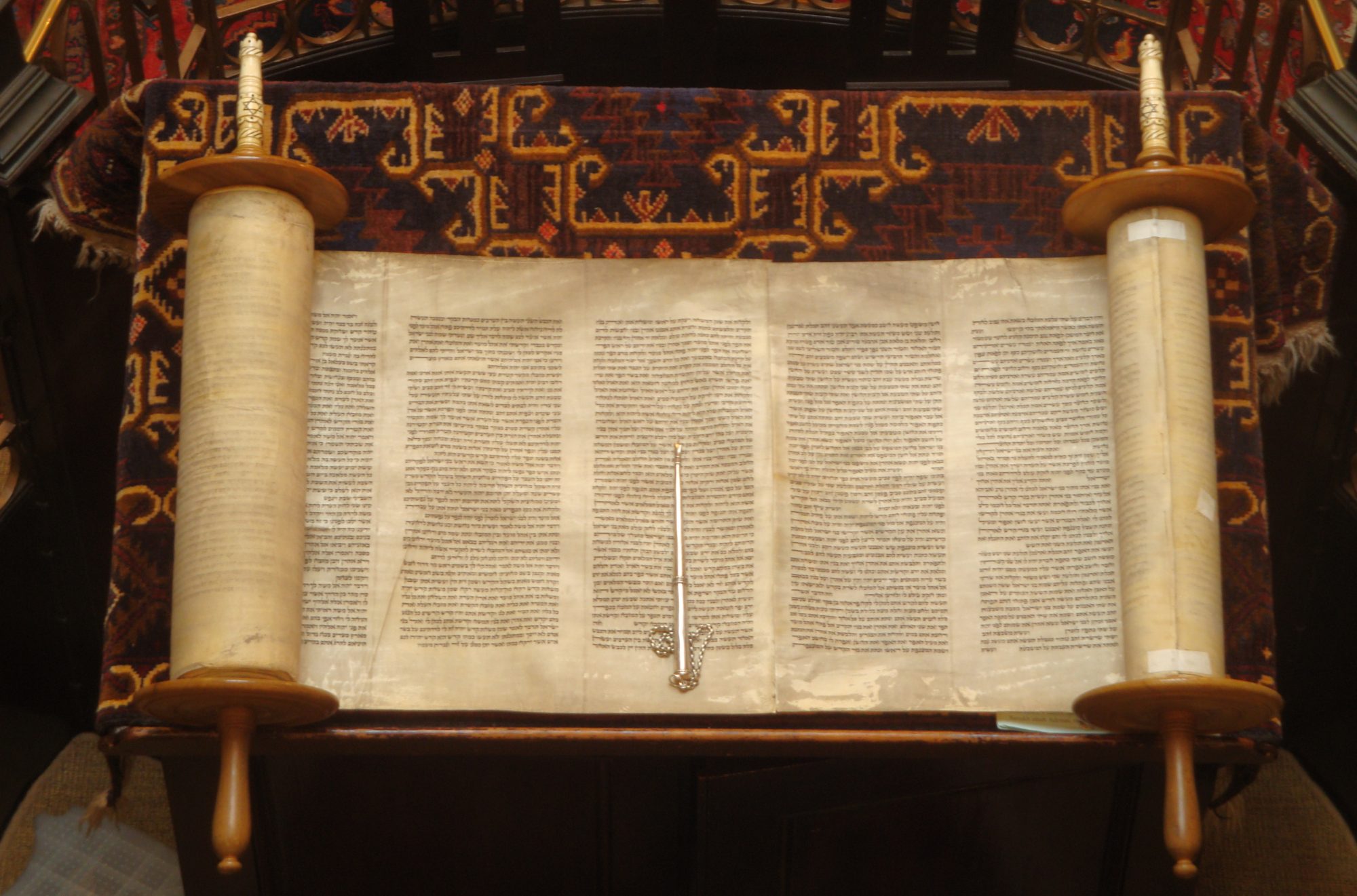
Introduction
This lesson is an introduction to a study of the New Testament and highlights the important scriptural concepts by each author of the New Testament writings along with the time frame in which the writings may have occurred. These writings were part of a class assignment in seminary for Introduction to New Testament to help narrow the focus of the respective books for independent study and are the personal opinion of the author. You, the reader, may come to further or additional opinions as you conduct your own personal study.
The most important points from each book are the focus for these lessons and are to be used in addition to individual study of the respective books to help in the understanding of scripture. This opinion of the author is not to be considered the final and authoritative manner in which to study scripture, but to assist the reader in forming a study procedure to help them comprehend the writings of the individual authors, the interrelationships of the books, and the context in which the books were written and the historical period.
Disclaimer: this summary of the New Testament books is not to be considered to be all inclusive nor used as a replacement for detailed independent eschatological study of any of the New Testament writings.
1Thessalonians
Considered the oldest book in the New Testament by some scholars.
This letter was written by Paul to the church at Thessalonica. The letter is Pastoral, warm in tone and affectionate throughout. No evidence of disunity or theological debate. Paul draws from the Greek language when speaking about marriage, community life, and engagement in civil life.
Paul, Silvanus (called Silas) and Timothy founded a church. Paul was the major writer but may have had input from both Silas and Timothy from manuscripts they had written at the same time. This was particularly true from Timothy when he met Paul in Corinth and related to Paul the condition of the Church in Thessalonica. It was not uncommon to have joint composition of letters in the ancient world.
This letter was written around AD 51.
This is a letter of thanksgiving to God for the faith, love, and hope of the young Thessalonian church. Paul also relayed his concern for the church. Paul, Silas and Timothy were forced to leave Thessalonica unexpectedly and Paul was never able to return even though he had a great love for the church that had been established.
Paul was unable to go back so he sent Timothy back to strengthen them and to learn of their welfare. He was comforted by Timothy’s report of the well-being of the church.
He tells of his thanksgiving to God for them and his prayer that he might see them again.
When Paul learned of the sexual immorality, he responded by emphasizing God’s will for them to be holy.
Since the Thessalonians are not Jewish converts, he refrains from quoting the OT in his writings, and does not refer explicitly to Judaism or any of the problems associated with it (e.g. Mosaic Law), or to any OT person, institution, or event (e.g. Abraham, Moses, the temple, or sacrifice).
While he does not quote the OT it is obvious it is the underlying basis for his writing since Paul was Jewish.
This book gives us the first insight of Paul’s missionary journeys and his teachings. It relates the problems early Christians faced living in Greek society and lets us see the inner life of the early church.
Paul wants them to put on the breastplate of faith and love, and for a helmet the hope of salvation.
He says to rejoice always, pray without ceasing, give thank in all circumstances, for this is the will of God in Christ Jesus.
1 Corinthians
The first letter was written by Paul around AD 54 to a congregation he had founded several years earlier.
Paul wrote the letter from Ephesus prior to arriving in Corinth.
Timothy was sent ahead of Paul.
Corinth was known as an important city full of vice. It was the crossroads of major trading for both overland routes and sea routes. It was widely known for prostitution and other vices.
There was even a verb in Greek (korinthiazomai or “to act like a Corinthian”) that referred to sexual immorality.
Paul arrived in Corinth about AD 50 and stayed for 18 months.
This letter is an exhortation and pastoral counsel. Hence, Paul invokes scripture, specifically Christian traditions, sayings of Jesus, his own apostolic authority and example, and also conventional practices and wisdom.
Paul deals with a wide range of problems and questions facing the young church – some reflecting the problems of the city itself – and he gives specific advice on dealing with them.
He addresses the following issues –
- Criticism of Paul’s non-intellectual approach to evangelism
- A flagrant case of sexual immorality in the church
- The practice of taking fellow believers to court before pagan judges
- Problems of sexual immorality
- Questions about marriage, divorce, and staying single
- The question of whether believers are allowed to eat meat sacrificed to pagan idols
- The question of appropriate dress for women who minister publicly
- Irreverent and disrespectful behavior in receiving the Lord’s Supper
- Distorted perspectives on spiritual gifts and their practice
- Skepticism about a future resurrection of the dead
2 Corinthians
Paul wrote 2 Corinthians about AD 56 when he was in Ephesus.
It is a disjointed letter compared to 1 Corinthians. In fact it is known that Paul actually wrote not less than 4 letters to the Corinthians. The first letter is apparently lost, the second letter became 1 Corinthians, the third letter apparently is lost, and the fourth letter is 2 Corinthians, somewhat disjointed. Chapters 1-9 appear to be consistent with Paul’s earlier writings while chapters 10-13 appear to be digressions or texts/manuscripts similar to the Dead Sea Scrolls.
There are multiple theories (at least 7) that discuss the nature and sequence of events during Paul’s time in Corinth, Macedonia and Ephesus. Each theory has a substantial basis for truth and acceptance and scholars will never be able to come to a complete agreement as to which is the most accurate.
Paul also sent Titus instead of Timothy to Corinth during the writing of 2 Corinthians and partially waited for his return and report, perhaps causing some of the disjointedness in the writing itself. He felt Titus would see things in a different light and the people would not know Titus as they had known Timothy.
Because of the time Paul wrote this letter, about Ad 54, it can probably be considered to be during his most effective and prestigious time of his life in his ministry. It was written after 1 Thessalonians but before Romans.
This letter expounds upon issues not addressed by Paul in 1Corinthians. Because of the complexity of the city, Corinth, being the center of trade and prosperity, the makeup of the population was diverse and the location was perfect for being a cosmopolitan society bringing with it all of its ills and pleasures.
The first part of this letter describes the Ministers Job Description (Ch. 1-7). It goes into detail the about the responsibilities and privileges of being a leader. Ch. 5 brings reconciliation into focus.
Philemon
Some question as to Paul’s situation when he wrote to Philemon.
It was written about AD 57-58.
Paul was in prison but it is not known exactly which prison.
The general consensus is that a slave, Onesimus, has run away from his master, Philemon. While this may not be exactly true, the resulting letter from Paul to Philemon would cover either set of circumstances.
Paul writes this letter in a differential way so as not to offend Philemon, but to ask also that Onesimus be treated “as more than a slave”.
It should be noted that Philemon was a respected Christian leader and a gracious loving person. This letter was sent by Paul through Onesimus to Philemon and was written in warm loving manner. It resembles a letter of recommendation and carries the full weight of Paul’s apostolic authority.
The outcome of Onesimus is unknown, but some 50 years later he could be the person referred to in the writings of Ignatius as the highly regarded bishop of the province of Asia. This would be a perfect example that class distinctions are of no significance in the church of Jesus Christ.
This letter illustrates the way that attitudes and relationships are transformed in Christ. Those who know Christ are to see people through the eyes of love and to express that love in their relationships with others.
Galatians
This letter doesn’t clearly explain to whom it is addressing, other than they are called Galatians. It probably more closely identifies those people whom Paul and Barnabas taught as they founded churches in the southern part of the country. However, there is substantial thought that the Galatians were of the northern part of the country and Paul and Barnabas are addressing these people.
References are made in the book of Acts to Galatia and would seemingly lean toward the northern part of the country for Paul and Barnabas to travel.
Differences of scholarly opinion also differ as to when Galatians was written, some believing it was in AD 48-49 while others believe it was AD 53-57. Since there are many thematic links with 2 Corinthians and Romans, it is more likely the latter period of time. However, there is also sound reasoning that because Paul makes no mention of the council of Jerusalem in AD 49-50, and he does not mentioned the result of the council in his travels, this would lend more credibility that it was written before the council in Jerusalem and the date would be AD 48-49. I personally support this theory as to the time it was written.
Paul is addressing rival missionaries and contested issues in Galatians. Paul believes these missionaries to be agitators and troublemakers, perverting the Gospel of Jesus Christ. Sadly, these agitators are Christian Jews who have decided that if you believe in Jesus as the Messiah, then you have to undergo circumcision as a sign of their inclusion in God’s covenant. Problem – should the marks of Jewish identity be imposed on gentile converts? It appears that the missionaries wanted gentile converts not just to be circumcised but to adopt comprehensive observance of Jewish law.
Paul preaches the Good News is states that it is the only true Good News, he (Paul) is a genuine apostle of Christ and his opponents will suffer God’s judgment for their false message.
Paul reminds the Galatians of who he used to be, his conversion experience and his calling by God. Paul received the Good News as a direct revelation from Christ rather than from other Apostles in Jerusalem.
Paul makes and argument that his presentation of the Good News is scriptural and true. The Galatians had experienced the Spirit by faith so they would experience the same blessing that Abraham received. Paul reminds them that God’s demand for righteousness was fulfilled by Christ, not by keeping the law, and those who have faith in Christ become recipients of God’s promise to Abraham.
There is no doubt that Paul is the author of Galatians as well as Romans, 1 Corinthians and 2 Corinthians and is the most genuine of all the letters attributed to Paul.


